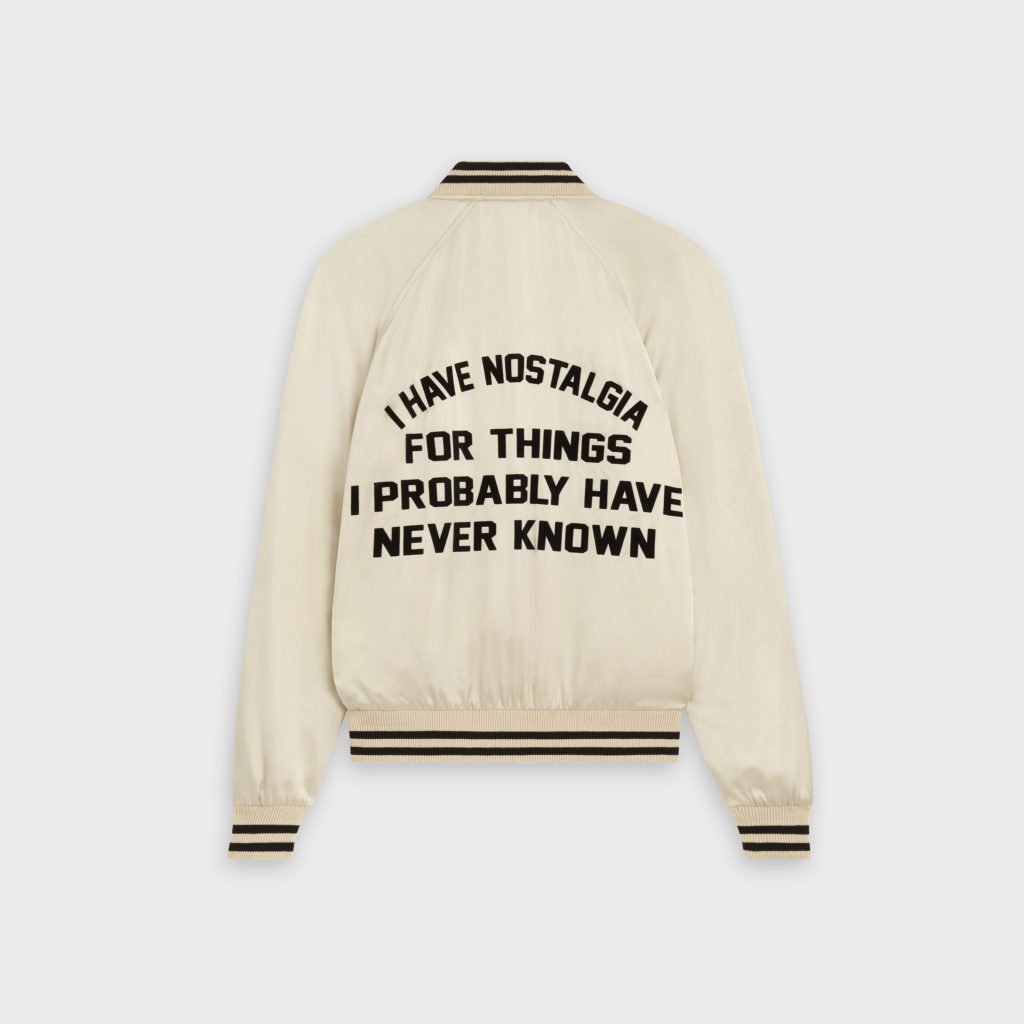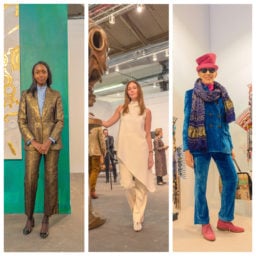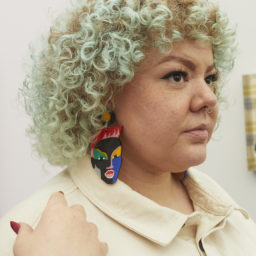Hedi Slimane is fashion’s perennial cool kid. His models are skinny, unsmiling, and seemingly always in a rush. While presenting his Celine Men’s Spring 2020 collection in Paris last June, he sent just that brand of model, decked out in ‘70s-inspired clothes, down the runway. Their bell-bottom trousers, Cuban-heeled boots and Bowie-esque tailored suits are signatures of what became known as the peacock revolution of men’s fashion, which effectively discontinued the lazy lines of hippie culture and redirected the category toward the swish, slick glamour of disco and rock and roll.
Around this time in fashion history, too, designers began to take inspiration from the art world in the form of Pop Art-inspired patterns and prints. And so it is fitting that Slimane—who is also a photographer himself as well as a dedicated art collector—teamed up with six artists to conceive the new collection, its designs paying tribute to the rich history of cross-pollination between the two sectors.
Indeed, if Andy Warhol’s 1967 Souper Dress was, in a sense, the first of its kind—a tricked-out luxury product-turned-artwork made doubly valuable by its creator—then the art-and-fashion collaborations that followed, born in the houses of haute couture and either conceived with or inspired by the top artists of the day, would constitute a new category all their own.
To the delight of fashion devotees—who had long bemoaned being pooh-poohed by art-world purists for their decidedly more commercial tastes—Warhol’s dress begot a new breed of collaboration that quietly ran parallel to the regularly scheduled programming of most fashion and art shows, occasionally making an appearance on a runway or in an exhibition.
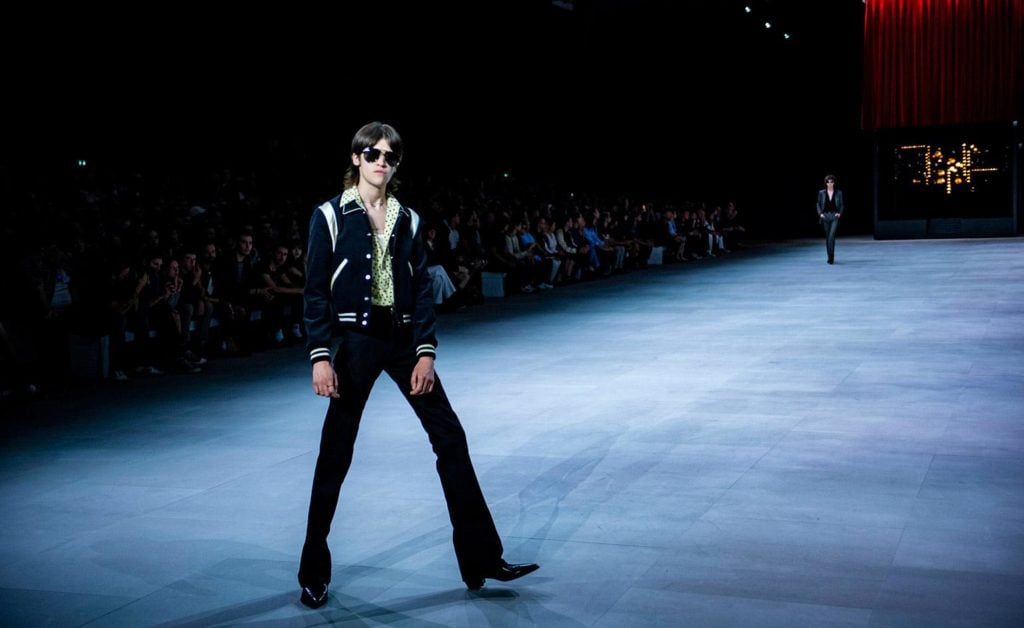
A look from Celine Men’s Spring 2020 collection. Photo courtesy Getty Images.
In recent years, of course, these boundaries have collapsed much further, opening the door to hybrid projects that consumers have not only come to expect, but covet.
The evolution of this corner of culture is exactly what inspired the collection that Slimane readied for the runway last summer—and now, it has arrived in stores and (perhaps more relevantly) is also available in its entirety online.
From the Minds of Artists
Featuring contributions from six artists, including painters David Kramer and André Butzer, the clothes carry with them a palpable sense of ‘70s nostalgia, culled from the artists’ recollections or imagined associations of the period.
There are straw totes and retro gym-style t-shirts featuring the painterly sunsets and cheesy slogans of vintage lifestyle ads courtesy Kramer, as well as the energetic, color-saturated brushstrokes of Butzer replicated on velvet jackets in winking, sequined patterns. New York-based artist Zach Bruder, meanwhile, created art around vintage comic-inspired characters and fragmentary images of domestic life—tables, fruit, and kitchenware, which collectively form a callback to Old Master still lifes.
“Hedi is pretty aware of what goes on around the contemporary art world,” says Kramer, whose work was perhaps featured most prominently in the collection. “I’ve been showing my work for years at galleries and art fairs all over the world, so that’s where our paths crossed. I think the thing that pushed him over the edge was a couple of solo projects I did at SPRING/BREAK [Art Show in 2019] in New York.” The works Slimane saw on display there would form the backbone of their collaboration. “He reached out to me through a gallery, and we took it from there,” Kramer says.
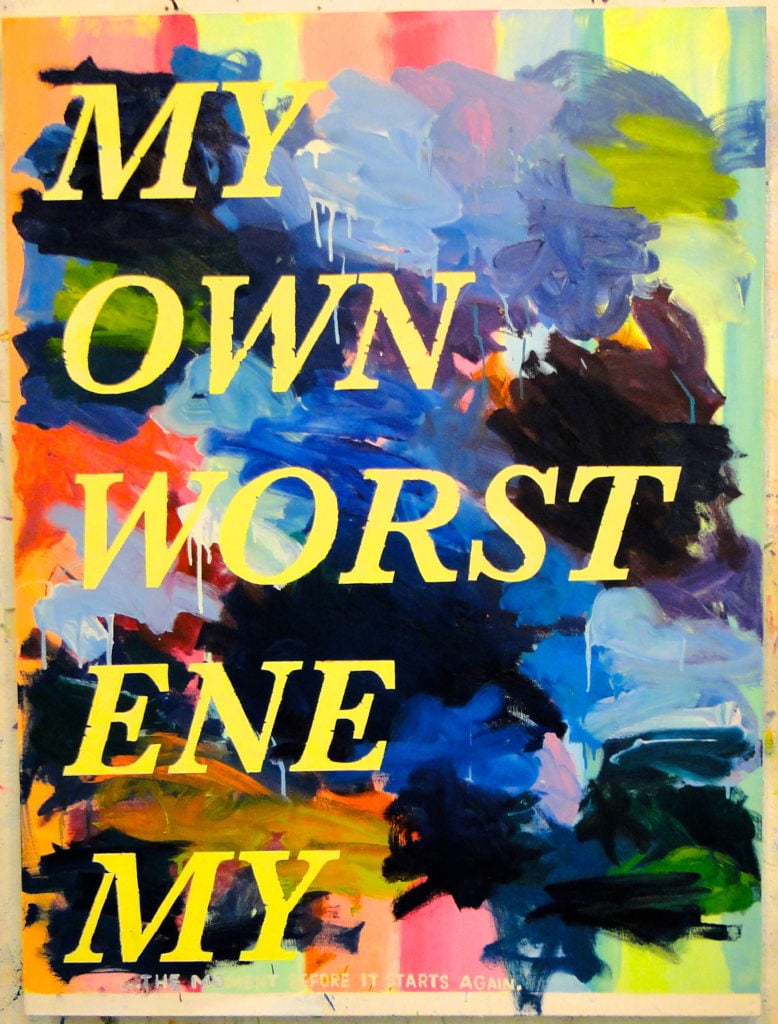
David Kramer, My Own Worst Enemy (2019). Image courtesy the artist.
Kramer presented Slimane with a wide selection of work, and the two discussed which would translate best onto clothing. The designer honed in on Kramer’s nostalgia-based “ad paintings,” which spoof ads from ’70s lifestyle magazines, feeling they would offer the collection a dose of familiarity and humor. Kramer worked with the designer to select the ironic phrases that were eventually emblazoned on several pieces.
“I’d been working with images and text for a long time, so naturally I’ve made t-shirts and hats and pins, but this experience with Celine was different,” Kramer says. “Before, I’d been trying to parody the idea of fandom. But this was the first time I’d worked with anyone in the fashion world. And I think the thing that surprised me most was how fast everything goes—and at a scale you just don’t see in the art world.”

David Kramer’s art featured on a Celine Spring 2020 t-shirt. Image courtesy Celine.
Art for the Masses
According to Kramer, the scale factor—the opportunity to have one’s work and message produced en masse for a new, but still-art-loving, audience—is a major factor driving artists into the arms of luxury brands. But that shift is still new. Kramer recalls taking an art criticism class with legendary critic Hal Foster while in school: “I remember this one thing he always used to say: essentially, that it was the job of the artist to run as far away from fashion, or what is fashionable, as fast as possible. To try to break the norms and find originality. But, if the artist is any good, he becomes fashion. And at times, the fashion world is better at recognizing the next new thing than the art world is.”
Although he admits he isn’t sure how it works at other houses, Kramer says he was also surprised by the creative leeway extended to him by Celine. “They were tremendously generous,” he notes. “They used my work to influence this collection and at no point have I felt like either of us lost our voice or had to compromise.”
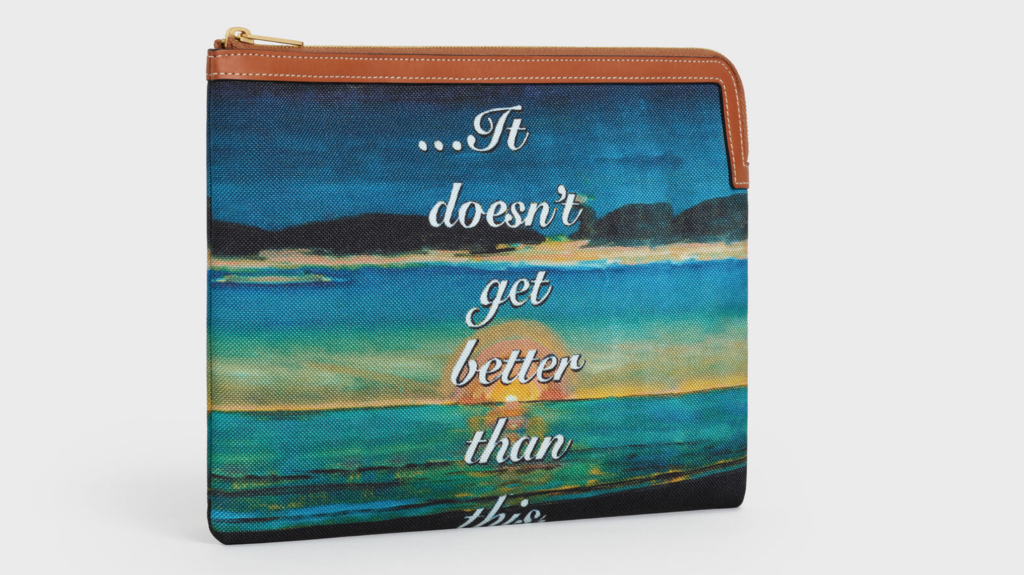
A Celine Men’s Spring 2020 wallet. Image courtesy Celine.
Plus, in fashion collaborations, at least the idea of creative exchange is explicit. “Fashion designers are hungry for ideas, and many of them can co-opt what they see around them,” the artist notes. “But people in the art world are guilty of this, too. We all have to respect each other’s ideas on our way to expressing our vision.”
And although Butzer, unlike Kramer, wasn’t actually familiar with Celine prior to this project, he is now a convert to the pleasures of such collaborations. “These people were great [to me], and they let me alone in in my garden, under the sun and plants,” he said in an email. “The results are wonderful, and I am very thankful.”
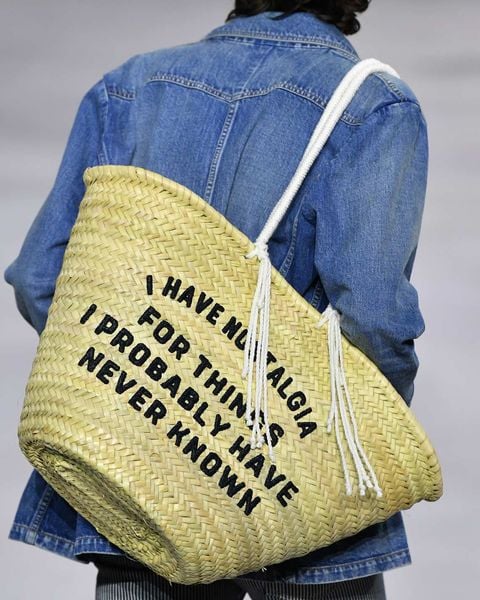
A straw bag from Celine Men’s Spring 2020 collection. Image courtesy Getty Images.
In the end, both artists were pleased to see their works transformed in dialogue and collaboration with a different kind of artist. “I love the straw bags with my text on them, that’s my favorite piece,” notes Kramer. “I never would have considered doing something like that myself. This is the best part of working with someone else. Mixing my words with Hedi’s vision—it worked great.”
